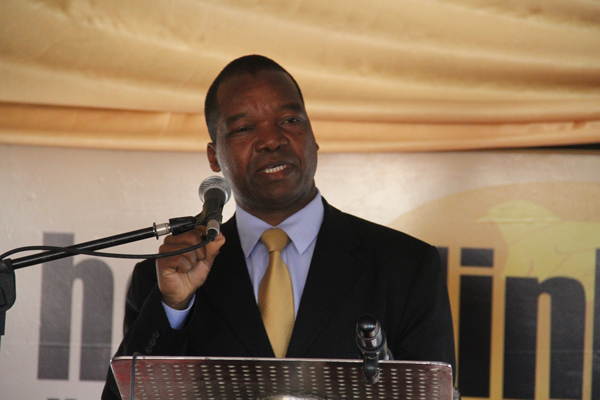
Reserve Bank of Zimbabwe (RBZ) governor John Mangudya says the country’s re-engagement with multilateral financial institutions is work in progress despite critics questioning the slow pace in the implemention of reforms by the government.
BY VICTORIA MTOMBA

Mangudya’s comments on Friday followed indications that Zimbabwe was close to paying the $1,8 billion debt owed to the IMF, the World Bank and the African Development Bank as it was finalising technical work with the international financial institutions (IFIs).
“We are going to pay as we are just finalising the technical work with the international financial institutions,” a source said.
According to a plan presented last year, Zimbabwe agreed to pay the combined $1,8 billion to the three preferred creditors — the World Bank, International Monetary Fund and the African Development Bank (AfDB) — to unlock cheap lines of credit to reboot the economy.
Zimbabwe owes the IMF $110 million, World Bank ($1,15 billion) and $601 million to AfDB.
Clearance of the debt to the preferred creditors is Zimbabwe’s first step in extinguishing it’s over $10 billion total debt.
In an October 2015 paper titled: Zimbabwe’s strategies for clearing external debt arrears and the supportive economic reform agenda, Finance minister Patrick Chinamasa said government would clear the arrears by the end of April.
- Chamisa under fire over US$120K donation
- Mavhunga puts DeMbare into Chibuku quarterfinals
- Pension funds bet on Cabora Bassa oilfields
- Councils defy govt fire tender directive
Keep Reading
He said thereafter, a new comprehensive country financing programme supported by the AfDB, IMF and the World Bank that attracted long-term financing would be put in place.
Chinamasa said the measures being undertaken by government to clear the debt arrears would include policy reform measures that involved strengthening of the financial sector confidence, revitalising agriculture and agro process value chain, focusing on infrastructure development and improving the investment climate.
It also included accelerating public enterprises reform and improving public finance management, aligning labour laws to the new Constitution and pursuing an anti-corruption thrust.
Critics have said government’s wheels seemed to be moving slowly in aligning laws to the Constitution and pursuing an anti-corruption thrust amid concerns that big wigs had escaped the anti-graft dragnet.
Mangudya said re-alignment of laws to the Constitution was not part of his job.
“There are too many things that are being done but I am not very sure if people need to see things physically,” he said.
In an interview recently, IMF resident representative Christian Beddies said Zimbabwe was working “very hard” to clear the $1,8 billion to pay the preferred creditors.
Beddies said: “Government is working on the modalities for all the three financial institutions. They are working very hard to clear the arrears.”
Last week, the UK toughened its stance on Zimbabwe saying its future support for the country required demonstrable progress on human rights, governance and rule of law, in addition to economic reforms.
According to a debt clearance plan submitted last year, Zimbabwe said it would get a bridge loan facility arranged by its debt advisors, the African Export Import Bank to clear its outstanding arrears to AfDB ($585 million) and African Development Fund ($16 million). It said the bridge loan would be repaid using inflows from the fragile state facility of AfDB.
It said it would use the special drawing rights to clear IMF’s $110 million debt and would seek a medium term loan to clear the World Bank’s $1,1 billion debt.
Sources have indicated that the arrears clearance plan had been affected by the imminent introduction of bond notes as the funders might lose confidence in the economy again.











